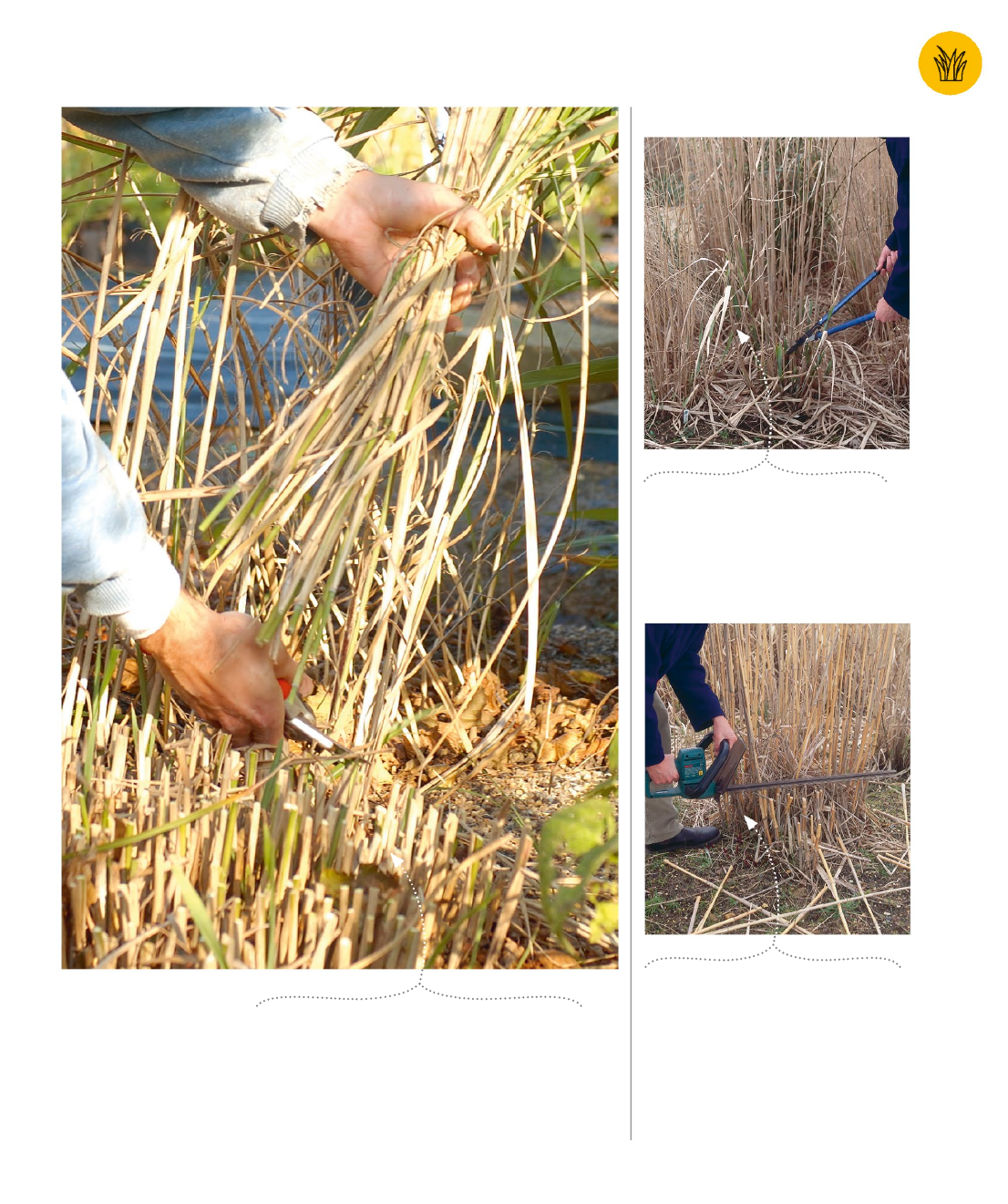
1
In late winter or early spring,
cut back the previous summer’s
browned stems near ground level. If
leaving to mid-spring to cut back
early-flowering species, try not to
damage any new green shoots.
CUTTING BACK
GRASSES
It is important to cut back nonevergreen (deciduous)
grasses hard to keep them looking their best. This
can be done in late fall or, if you want to keep
grasses uncut in winter for structure and interest,
cut them back in early spring.
YOU WILL NEED
• pruners, or loppers, or electric
hedge trimmer
• garden gloves
SEE ALSO
• CARING FOR GRASSES >> 148/149
• DIVIDING GRASSES >> 154/155
• CHOOSING GRASSES >> 156/157
Trim a few older
stems at a time to
avoid cutting
back new growth
JARGON BUSTER
Deciduous grasses are those that
lose their green color and die back to
a golden-brown shade in fall and
winter. Like deciduous trees
shedding old leaves in fall and
winter to be replaced by new leaves
in spring, deciduous grasses will
start to show green shoots early
in the year.
US_152-153_Cutting_Grasses.indd 152 07/09/2018 16:34

GRASSES // CUTTING BACK GRASSES 152–153
Cutting back larger areas
It’s quicker to use an electric hedge
trimmer to cut back larger clumps.
Cut the stems slightly higher than
you would with clippers to avoid
damaging new growth at the base.
2
Work your way methodically through the
clump, removing all the old stems (which
can be composted). Some grasses can be
divided once cut back, while others are best
divided when in active growth.
ALTERNATIVE METHODS
Thick stems or short leaves
Some grasses are too tough for
garden clippers, and can injure
bare skin. Protect your hands
by wearing gloves or using long
loppers for cutting.
US_152-153_Cutting_Grasses.indd 153 07/09/2018 16:34
..................Content has been hidden....................
You can't read the all page of ebook, please click here login for view all page.
